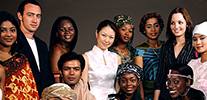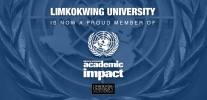
The culture of Tajikistan has evolved over thousands of years and can be divided into two main areas, namely Metropolitan and Highland (Kuhiston). The country’s people are distinguished by region, with city and urban populations preferring westernised fashion while villagers prefer more traditional attire.
People’s Pride
Tajiks tend to be honest about their relationships and usually do not hide issues. They are also proud to share with others about their life and country’s culture.
Since achieving independence in 1991 from the Soviet Union, Tajikistan has successfully fostered its national identity.
National Identity
According to the CIA World Factbook, ethnic groups in Tajikistan consist of 84.3% Tajiks, 13.8% Uzbeks and another 2% consist of Kyrgyz, Russian, Turkmen, Tartar and Arab.
The country is predominantly Islamic with 85% Sunni Muslims and 5% Shia Muslims while the remaining 10% consist of various other religions.
Big Family
A Tajik family kinship extends beyond the immediate families and includes the grandchildren of great-uncles. Family leaders are often the oldest and the wisest members of the community.
These close ties help support the community. Most members live within close proximity to each other and many household items are shared within the community.
Etiquette
Humility and hospitality are an essential part of Tajik culture. Elderly family members are given respect. When greeting another, a demonstration of good manners and respect is done by placing the left hand over the heart with a slight bow.
At a large social gathering, men and women are separated. Moreover, a man must never enter a home where there are only women, and a girl must never be left alone with a boy.
Remember Manners
Never use your left hand to exchange gifts, money, food or greetings. It is best not to reject food offered by a host as it would be seen as being rude. One should eat a little bit as a sign of respect.
When sitting, avoid showing the soles of your feet towards a person opposite you. If you stepped on someone’s toes, it is best to apologise.
This article is part of a series highlighting the unique cultures featured in the recently concluded Limkokwing International Cultural Festival 2017.






















